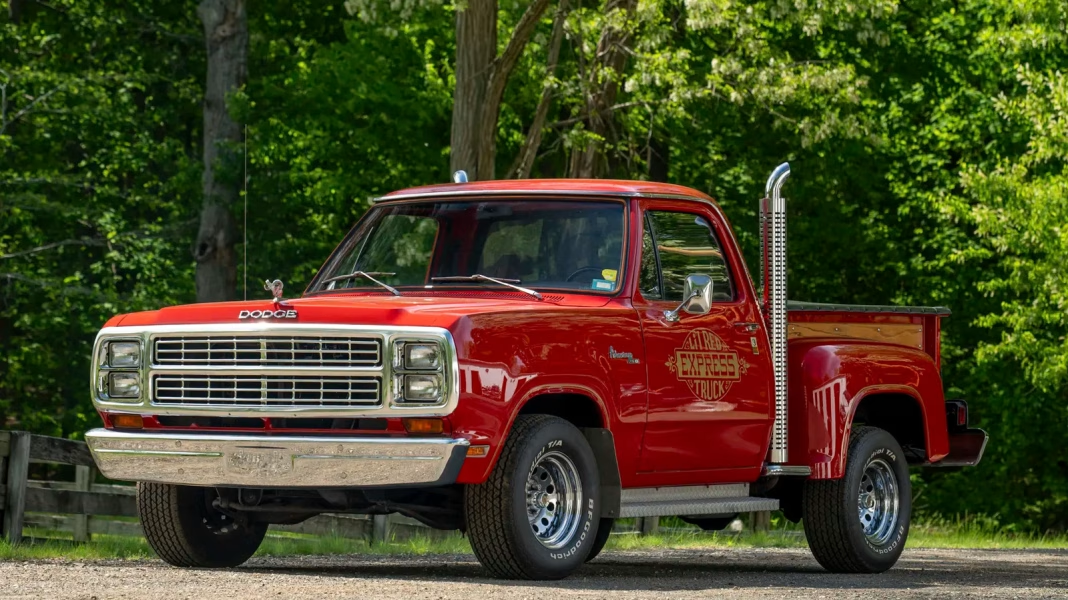Why Did the Dodge Li’l Red Express Stand Out in the Late 1970s?
When you think of muscle cars, your mind probably jumps to the golden era of the late 1960s and early 1970s—big engines, wild colors, and the kind of rumble that rattled your bones. But by the late 1970s, things had changed. The oil crisis hit, emissions regulations tightened, and suddenly, performance seemed like a thing of the past. Yet, out of nowhere, Dodge threw a curveball: the Li’l Red Express. Not a coupe, not a sedan—a pickup truck.
So, what made this truck such a standout? For starters, it was the fastest American vehicle you could buy in 1978 and 1979, according to period tests by Car and Driver and Motor Trend. Yes, you read that right—a pickup truck outpaced the Corvettes and Camaros of its day. Dodge managed this by exploiting a loophole: light trucks weren’t subject to the same strict emissions controls as passenger cars. The result? Pure magic.
How Did Dodge Pull Off This Performance Trick?
Dodge engineers got creative. They took a 360-cubic-inch V8, gave it a special camshaft, beefed up the carburetor, and added a dual-snorkel air intake. But the real party trick was the exhaust: those tall, vertical chrome stacks behind the cab weren’t just for show. They let the engine breathe freely, giving the Li’l Red Express a throaty bark and a serious power boost—180 horsepower, which was a big deal back then.
The truck wasn’t just quick in a straight line. It could do 0-60 mph in under seven seconds, which was faster than just about anything else on American roads at the time. And it did all this while looking like nothing else out there, with its bright red paint, gold decals, and wood trim. It was bold, brash, and unapologetically American.
What Was It Like to Drive and Own a Li’l Red Express?
Owners of the Li’l Red Express will tell you: it was a head-turner. You couldn’t go anywhere without drawing a crowd. The sound alone—deep, rumbling, and unmistakable—announced your arrival before you even turned the corner. The ride was classic late-70s truck: a bit bouncy, a bit raw, but full of character.
Inside, things were simple but comfortable. Bucket seats, a sporty steering wheel, and a dash that looked more muscle car than work truck. It wasn’t luxurious, but it had personality in spades. And while it could haul a load, most owners treated it more like a prized toy than a workhorse.
How Did the Li’l Red Express Influence the Pickup Market?
The Li’l Red Express wasn’t just a flash in the pan. It helped kick off a new era for pickups—one where style and performance mattered just as much as utility. Before this truck, pickups were mostly seen as tools. Afterward, automakers realized there was a market for trucks that were fun, fast, and full of attitude. You can draw a straight line from the Li’l Red Express to today’s high-performance pickups like the Ford F-150 Raptor and Ram TRX.
Collectors have taken notice, too. Clean examples of the Li’l Red Express have become sought-after at auctions, with prices steadily climbing. According to Hagerty, values for well-kept trucks have increased by more than 30% over the past decade, reflecting their growing status as icons of a unique automotive moment.
What’s the Legacy of the Li’l Red Express Today?
The Li’l Red Express is more than just a quirky footnote in Dodge’s history. It’s a testament to American ingenuity—finding a way to bring excitement back to the road when the odds were stacked against it. It’s also a reminder that sometimes, the best ideas come from thinking outside the box (or, in this case, the bed).
For enthusiasts and collectors, owning a Li’l Red Express is about more than nostalgia. It’s about celebrating a time when rules were bent, creativity flourished, and a pickup truck could outgun the sports cars of its day.
The big takeaway? Chasing performance isn’t about perfection—it’s about smarter adjustments. Start with one bold idea, and you might just end up rewriting the rules.


